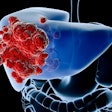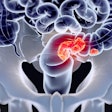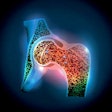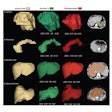
Nvidia has launched Clara Holoscan MGX, a hardware and software platform designed to support development and deployment of healthcare artificial intelligence (AI) applications, at this week's 2022 GPU Technology Conference (GTC).
A platform aimed at software-defined medical devices, Clara Holoscan MGX can support AI and advanced visualization applications at the edge -- where the data is produced -- in real-time, according to the vendor. Holoscan MGX can be embedded directly into a new medical device or it can be deployed next to an instrument in a "sidecar" format to perform edge computing.
Both the hardware and software components of Clara Holoscan MGX meet regulatory standards for medical devices.
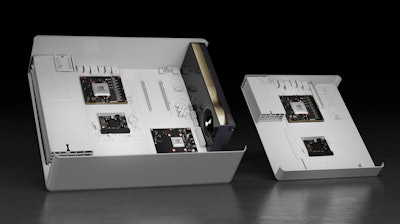 Clara Holoscan MGX is a hardware and software platform designed to support the medical device industry in developing and deploying real-time AI applications at the edge. Image courtesy of Nvidia.
Clara Holoscan MGX is a hardware and software platform designed to support the medical device industry in developing and deploying real-time AI applications at the edge. Image courtesy of Nvidia.In medical imaging applications, "you can essentially intercept the data coming from the instrument, bring it into the MGX medical-grade 'sidecar,' do your processing, and display it for the surgeon or for the radiologist," said Kimberly Powell, vice president of healthcare at Nvidia.
The hardware for Clara Holoscan MGX consists of Nvidia's Jetson AGX Orin Industrial module, RTX A6000 GPU, and ConnectX-7 SmartNIC network adaptor. Nvidia also provides operating systems, drivers for supported input/output devices, AI inferencing and acceleration libraries, and reference applications as part of a Holoscan MGX "stack."
The resulting AI platform provides up to 254-619 trillion operations per second of AI performance, according to the vendor. Customers can build AI applications on Holoscan MGX, benefiting from significantly lower engineering requirements, Powell said.
"Whether you're a startup building the next-generation surgical robotics or whether you're a software company who's building software as a medical device, you now have the AI infrastructure and medical-grade platform to be able to deploy these applications into the healthcare environment," she said. "And it's providing the architecture for a software-as-a-service business model because it can [update] over the air and it can improve over time."











